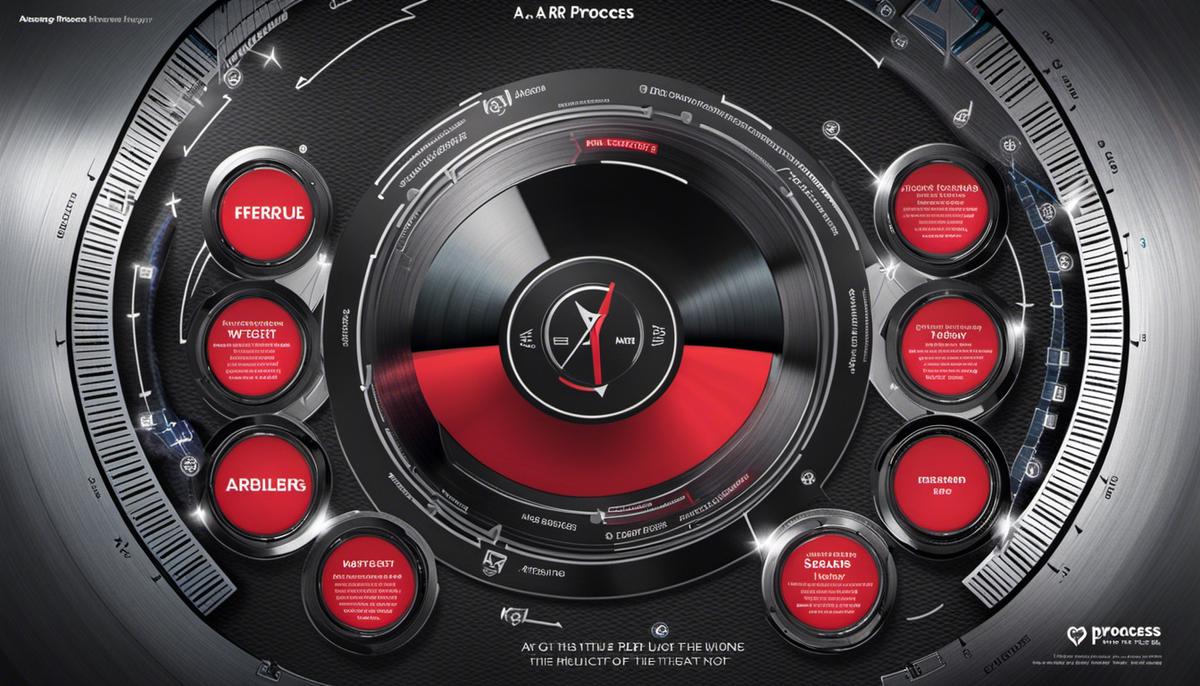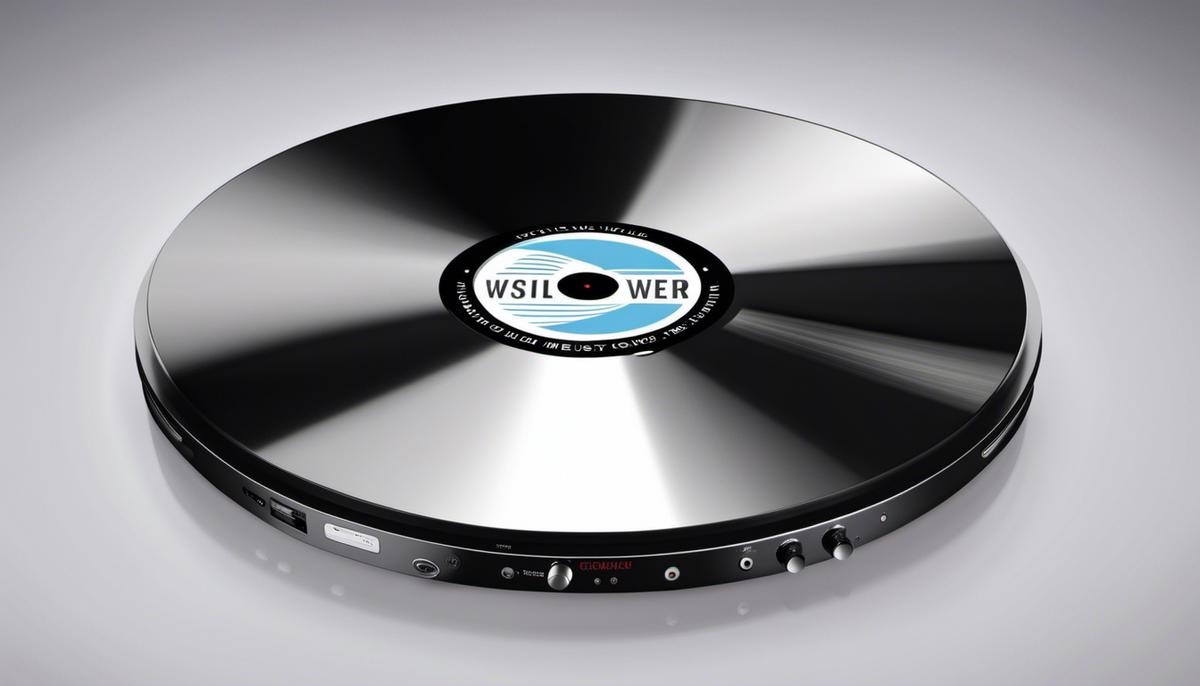Table of Contents
Introduction
The music industry, a global powerhouse of creativity and commerce, serves as a podium for talents to transform into global sensations. As the primary interface between artists and audiences, record labels play a salient role in shaping this industry. Understanding the intricacies of record label operations illuminates their influence within the integrated structure of the music business.
This deep-dive will explore everything from talent scouting and signing, to record production and promotion, financial aspects and business models, and the ever-evolving trends that present opportunities and challenges. The aim is to equip enthusiasts and hobbyists with a comprehensive understanding of the record label world, thus enabling informed discussions and decisions.
Understanding the Music Industry and Record Label Operations
Understanding the Music Industry and Record Label Operations
The music industry, a broad and complex framework, comprises a multitude of experts and organizations, all of which function together to support, create, publish, promote, and distribute music. Key players include performers, songwriters, managers, music publishers, and, of course, record labels. Record labels are fundamental entities within this intricate network, often serving as powerhouses of music production, distribution, and marketing.
Types of Record Labels
There are primarily two types of record labels: major and independent (indie). Major labels, as their name implies, are large companies, often part of even larger media conglomerates. They typically have substantial resources, expertise, and international distribution networks. There are three remaining major record labels, otherwise known as the “Big Three”: Sony Music Entertainment, Universal Music Group, and Warner Music Group.
Independent labels, often referred to as “indie” labels, operate outside of these major label systems. They can vary significantly in size, ranging from one-person operations running out of a home office to larger organizations with multiple employees and larger scopes of influence.
Functions of Record Labels
Regardless of their size or type, record labels perform several critical functions within the music industry. First and foremost, labels identify, sign, and develop musicians and artists. They offer financial support, industry knowledge, and professional networks necessary for artists to record music.
Second, labels are responsible for the production of physical and digital music products. Depending on the size and resources of the label, this might include recording, mixing, mastering, packaging, and physical product manufacturing.
Third, record labels handle the distribution of music, ensuring it gets into the hands or digital devices of consumers. This delivery might be direct to physical record stores or through digital platforms such as Spotify, Apple Music, or Amazon Music.
Lastly, marketing and promotion fall under the purview of record labels. They design and execute promotional strategies, public relation campaigns, and other marketing initiatives to generate buzz around an artist, an album, or a specific song.
Role of Record Labels in the Music Scene
Record labels command a key position in the music industry, acting as a catalyst for large-scale music production and distribution by providing the necessary financial backing. Besides the financial aspect, they contribute significantly in terms of market intelligence, networking opportunities, and a host of other services that assist in the growth and popularity of an artist.
Record labels, through their choices of artists, songs, and marketing strategies, mould the musical tastes and culture. Their far-reaching influence determines the kind of music that gets popular and respected on a mass level.
It’s worth acknowledging that the digital revolution has introduced a variety of platforms and opportunities for musicians to produce, propagate, and promote their work, often eliminating the need for conventional record label routes. This shift has initiated discussions about the evolving role played by record labels in today’s music industry. However, record labels still play an indispensable role in the functioning and evolution of the music business.

The A&R Process and Signing Artists
A&R: The Music Industry’s Lifeblood
A vital component of any record label’s operations is the Artists and Repertoire (commonly known as A&R) department. This group’s primary responsibility is identifying and signing promising new artists and supervising their creative output. The process begins with scouting for talent which requires A&R teams to remain abreast of the music scene for emerging talent with significant potential. Be it concerts, music festivals, nightclub gigs, or even the vast landscape of social media, these professionals leave no stone unturned in their quest to find artists who could make meaningful contributions to the music industry.
Strategies for Artist Scouting
Scouting for artists doesn’t follow a clear-cut, linear path. A&R representatives must cultivate a diverse and expansive musical taste, being open to different genres, styles, and up-and-coming trends. It is common for industry scouts to attend live shows, immerse themselves in local music scenes, and watch online streaming services to identify potential talent. They also pay attention to bands or artists who are generating online buzz or developing a strong grassroots following. In the modern music industry, social media platforms like SoundCloud, Instagram, and YouTube have become significant tools for artist discovery.
Considerations During Signing
The process of signing an artist to a label goes beyond just raw talent. A&R representatives must consider the artist’s marketability, their compatibility with the label’s brand, the potential return on investment, and the artist’s commitment to their craft. The signing process often involves negotiation around terms of the contract, which can include discussions on advances, royalties, album commitments, promotional obligations, and licensing rights.
Role of A&R in Talent Development and Maintenance of Artist-Label Relationship
Once an artist is signed, the role of the A&R department doesn’t stop there. The department is instrumental in developing the artist’s sound, branding, and career trajectory. They work closely with artists on musical direction, song selection, album production, and marketing strategy.
Moreover, A&R officials serve as the fundamental link between the artist and the record company. They ensure seamless communication and address any issues that might arise to maintain a healthy and productive relationship between both parties. The A&R team’s guidance and connection can be critical to an artist’s success in the cutthroat music industry.
Real-life Examples and Case Studies
A glance at music history reveals plenty of successful A&R scouting examples. Tommy Mottola, former head of Sony Music Entertainment, is well-known for signing Mariah Carey in the 90s. At Island Records, Chris Blackwell signed Bob Marley, creating a massive shift in the global music industry. A more contemporary example includes Scooter Braun’s discovery of Justin Bieber on YouTube, demonstrating the power of social media in modern artist discovery.
The A&R department serves as the lifeblood of record label operations. It undertakes key responsibilities such as spotting new talent, signing on artists, overseeing the evolution of artists’ careers, and maintaining harmonious artist-label relations. The judgments and relationships formed by the A&R team can significantly shape the course of an artist’s career, underscoring the integral role it plays in the music industry.

Record Production and Promotion
Music Record Creation
Launching the construction of a music record typically involves musicians and producers brainstorming and arranging song pieces together. The next phase sees the recording of tracks, usually handled by the musicians individually or collectively in a professional recording studio. These raw recordings then undergo editing and are blended into a ‘master track’. The editing stage predominantly deploys the skills of sound engineers to guarantee the desired auditory quality and balance across instruments and vocals.
The final stage, post-production, involves the act of mastering. This process includes giving the finishing touches to the final tracks to ensure they sound harmonious and refined. Mastering engineers are responsible for tweaking the frequency range, dynamics, and other elements of the tracks to ensure their optimum performance across varied sound systems and media platforms.
The Role of Record Labels in Production
Record labels play a critical role in the production process. They often provide the financial backing for the cost of production, including studio time, producer and engineer fees, and even basic living expenses for the artist before and during the production process.
Labels also provide professional guidance in choosing the right producers, songwriters, and engineers for a particular project. They coordinate with distribution channels and retailers to ensure the records reach audiences once released.
Promotion and Marketing
Record labels are crucial in promoting and marketing the music. They often have established relationships with key players in the media and can therefore give artists wider exposure than they might achieve on their own.
Promotion activities might include arranging for media coverage, radio play, or advertising. Labels also organize and promote live events such as concerts and festivals as a part of album or single promotion.
Digital platforms have transformed how music is consumed and also heavily influenced promotional strategies. Record labels coordinate with streaming services like Spotify and Apple Music to feature songs in popular playlists. They also use social media and music promotion platforms to reach and engage potential fans.
Pivotal Promotion Approaches
The promotional strategies employed by record labels can vary greatly; these unique approaches correlate with both the music genre and the specific artists involved. However, some promotional tactics have proven universally valuable.
A key initial step is ensuring visibility on digital platforms, as this broadens both potential and existing fan bases. Regular and engaging content on social media is essential in fostering and preserving a loyal audience.
Additionally, collaborations with music industry bloggers and influencers can significantly boost a label’s profile. Exclusivity adds allure; exclusive track premieres and releases stand to generate considerable buzz among fans.
Visibility is further increased by active participation in live events such as music festivals, or online concerts and sessions. Collaborating with fellow artists or other brands can also considerably extend a label’s reach and visibility.
The ultimate key to successful promotion is consistency; maintaining momentum and continually engaging the audience with updates about artists, new releases, and upcoming events.

Financial Aspects and Business Models
Capitalization and Sources of Revenue
Several streams of income underscore the funding of a record label in the music industry. Basic sources include music sales, merchandise, and concert ticket revenue. However, the emergence of digital technology has ushered in additional crucial income streams, such as streaming royalties, digital sales, and licensing for film, TV, and advertising use.
A thorough comprehension of these varied revenue streams is crucial; it’s central to successfully diversifying assets and achieving financial stability within the unpredictable music industry landscape.
Budgeting in the Music Industry
In record label operations, meticulous budgeting plays a critical role. Budgets are primarily required to fund album production, marketing and promotion, artist development, and touring. Each potential expenditure must be carefully scrutinized and justified, keeping in mind the label’s financial health and the potential return on investment. Record labels typically draft a budget proposal for each project to ascertain feasibility before giving it a go-ahead.
Artist Royalties and Advances
A significant part of the financial operations of record labels revolves around artist royalties and advances. Artists are usually paid an advance which is an upfront sum given before a project starts. This money is generally used to cover the cost of production and living expenses. Royalties, on the other hand, are a percentage of revenues earned from record sales or streams, paid out to the artist after the advance has been recouped by the label. Knowing these structures is crucial for transparent and fair operations.
Understanding Record Label Business Models
Different record labels operate under a variety of business models, each carrying its own economic risks and rewards. Major labels usually stick with the traditional business model, where they sign artists to contracts, finance the production and promotion of their music, and in turn, earn a considerable share of the revenue generated. Meanwhile, independent labels often operate more modestly and can afford to offer artist-friendly contracts with more favorable royalty rates.
Recently, the music industry has seen the rise of a hybrid label model known as the ‘360 deal.’ Under this model, the label heavily invests in an artist’s career and consequently earns a piece of all revenue streams, including ones derived from record sales, live performances, merchandise sales, and more.
Innovative models have also sprung up, such as the ‘label services deal,’ which offers artists the advantage of label support without demanding as much control or revenue. In this model, the label provides services like distribution, marketing, and promotion, which the artist then pays for from their profits.
Choosing the right business model largely depends on a label’s financial standing, risk tolerance, and long-term goals. Any chosen model should ideally strike a balance between profitability and supporting artist growth.

Futuristic Trends and Challenges in Record Label Operations
The Impact of Streaming Trends on Record Labels
In recent years, music streaming services like Spotify, Apple Music, Amazon Music, and others have drastically reshaped the way audiences consume and discover new music. These platforms now account for the lion’s share of recorded music revenue in the United States. Their extensive music libraries offer consumers a broad spectrum of artists and genres right at their fingertips, consequently intensifying the competition for listeners’ attention. Record labels must therefore adapt and find innovative ways to stand out and effectively promote their artists’ work amidst the clamor of the streaming landscape.
Changes in Consumer Behavior
Consumer behavior in music listening is rapidly changing. Fans today expect easy access to music, seamless user experience, and customization capabilities from their streaming platforms. As a result, consumers are veering away from album purchases in favor of building individualized playlists. This shift has forced record labels to change their strategies in music production and promotion, focusing more on singles rather than full-length albums.
Impacts of Technology on Record Labels
Another significant challenge and opportunity for record labels is the impact of technology. Innovations like virtual reality (VR), augmented reality (AR), and artificial intelligence (AI) offer new ways to experience and create music. Record labels can utilize these technologies to create immersive music experiences, generate personalized content, and automate some aspects of their operations, such as data analytics and market segmentation. However, integrating these technologies into their operations means dealing with issues like high development costs and the need for specialized technical capabilities.
Adapting to the Digital Age
The shift to digital has directly affected record label operations. Physical sales are declining while digital sales continue to grow rapidly. As a result, record labels need to strengthen their digital presence by establishing strong relationships with streaming platforms and optimizing their digital marketing strategies. They also need to develop new revenue streams, like live-streaming concerts and selling merchandise digitally.
Understanding the Data
The digital age has also brought extensive data on consumer behavior. This data, through advanced analytics, provides record labels with new insights into their customer base. It allows them to adjust their strategies based on real-time feedback. However, the vast amount of data can also be overwhelming and requires specialist skills in data science to understand and leverage it effectively.
Keeping Up with Regulatory Changes
In addition to technological changes, record labels also need to keep up with changes in laws and regulations. Issues such as copyright laws and licensing agreements can have significant impacts on a label’s revenue and operations. For example, digital sampling, wherein artists incorporate portions of existing songs into their recordings, poses a significant legal challenge. Record labels must understand and navigate these legal aspects to protect their artists and themselves.
The Shift Towards Independent Artists
The rise of independent artists and record labels is another trend impacting the music industry. More artists are choosing to bypass major record labels and release music independently, relying on digital platforms for distribution and promotion. This presents a challenge to traditional record labels as it threatens their traditional business model. To remain competitive, they need to offer appealing deals and services that artists cannot get by going it alone.
In conclusion, the future of record label operations is dynamic, challenging, and filled with opportunities for those willing to adapt and innovate. The key to success lies in understanding these trends and leveraging them effectively to engage with the changing consumer base and stand out in the competitive market.

Conclusion
As we witness the dynamic evolution of the music industry, record labels remain a pivotal part of this transformation, whether by nurturing emerging talents, driving strategic promotions, or navigating the challenging financial landscapes. As outlined, they operate complex models, performing varied functions at different stages of an artist’s career.
By staying informed of the latest trends and challenges in the industry, like the boom of streaming services and changing consumer behavior, one can better comprehend the current and future state of record label operations. Equipped with this knowledge, we can foster a deeper appreciation for the music we enjoy, understanding the cohesive and relentless efforts that bring these melodies to our ears.
Additional Reading
Take some time to check out our other articles:
- Popular Music Industry Careers
- The Metaverse and Music
- 7 Essential Music Production Tools Under $100
- 5 Best Ways To Invest In Music
Breve Music Studios publishes music to Spotify, YouTube Music, Amazon Music and more. Follow our pages on Facebook, Instagram, Twitter, TikTok, and YouTube.
Listen to our ensembles: Breve Orchestra, Breve Music Ensemble, Breve Low Brass Ensemble, Breve Woodwind Ensemble, and Jermaine Harris on Spotify.






